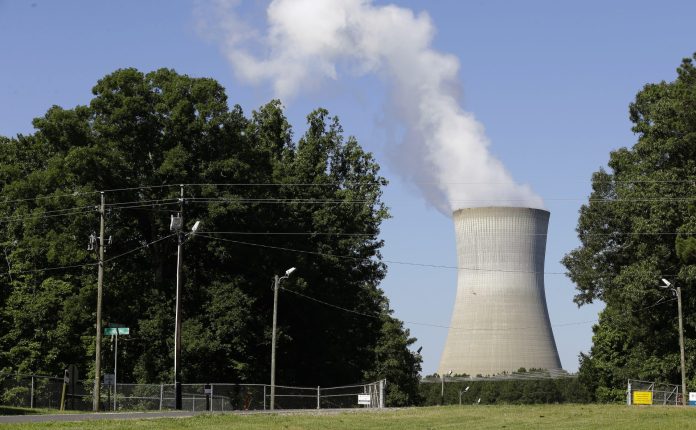
The complex, ever-shifting world energy scene is giving a renewed prominence to nuclear power.
Safety concerns caused global uranium production to fall by 25 percent from 2016-20, but the appeal of nuclear power as an emissions-free and very dynamic source has recently prompted Belgium, Sweden, Spain and Finland to make it a priority.
Consequently the production of uranium and its radioactive “yellowcake” derivative rose a little to 49,355 metric tons last year while yellowcake’s price boomed by 20 percent to $65 per pound.
The London-based World Nuclear Association predicts a 28-percent bump in the demand for uranium by 2030 and for the demand to double by 2040.
Oil and natural gas currently supply 60 percent of the world’s power while nuclear and renewable sources account for 20 percent each.
Waco economist Ray Perryman says the nuclear alternative “is a classic no-brainer” because it offers substantial emissions-free power.
“Unless there is an incident of some kind nuclear power is the cleanest of them all,” Perryman said. “But widely publicized accidents have stoked fear and environmental activists have opposed the construction of new facilities for decades.
“My firm has worked on many existing and potential nuclear facilities over the years with virtually all of the new ones being stymied.”
In Texas the Comanche Peak Nuclear Power Plant near Glen Rose 40 miles south of Fort Worth and the South Texas Nuclear Generating Station near Bay City 90 miles southwest of Houston chip into the grid
“In the past facilities took years and millions of dollars to even get permits,” Perryman said. “Construction would then take more years and likely billions of dollars. For such massive investments to make sense it has to be clear that future profits will be sufficient for the projects to be economically viable.
“When policy can shift and force shutdowns or change relative price structures by subsidizing certain forms of power generation such as wind and solar over others, it presents additional risks to potential investments in nuclear facilities.”
On the bright side the economist said the technology has advanced.
“There are now different techniques and project sizes which may be safer and make more economic sense,” he said. “The situation is evolving and if incentivized the pace of innovation will increase.
“One particularly interesting development has been the possibility of developing micro-facilities for specific purposes. For example, a small facility could potentially be built on a few acres which could both power an oil field and purify water for further use.
“Thorium is more plentiful than uranium and it can be bonded to produce the U-233 isotope needed for nuclear power generation,” Perryman said. “However, it involves higher risk and any transition is likely to be relatively slow given the overall investor wariness regarding the safety of nuclear power.”
The World Nuclear Association says thorium “has been a tantalizing prospect for many years.
“Extracting thorium’s latent energy value in a cost-effective manner remains a challenge that will require considerable research and development investment,” the WNA said. “This is occurring preeminently in China with modest U.S. support.
“Thorium is a naturally occurring, slightly radioactive metal discovered in 1828 by the Swedish chemist Jons Jakob Berzelius, who named it after Thor, the Norse god of thunder. It’s found in small amounts in most rocks and soils where it is three times more abundant than uranium. Soil contains an average of six parts per million of thorium.
“Thorium is very insoluble, which is why it is plentiful in sands, but not in seawater in contrast to uranium.”
Perryman said there is no doubt that nuclear power could play an important role in simultaneously meeting the need for electricity and reaching climate goals.
“As you have heard me say often, we will require an all-of-the-above strategy to meet rising global energy demands and deal with climate issues,” he said. “But the bias against using it which is in place among many groups including key constituencies in Washington is real and will remain a factor in investment decisions and permitting processes.”



